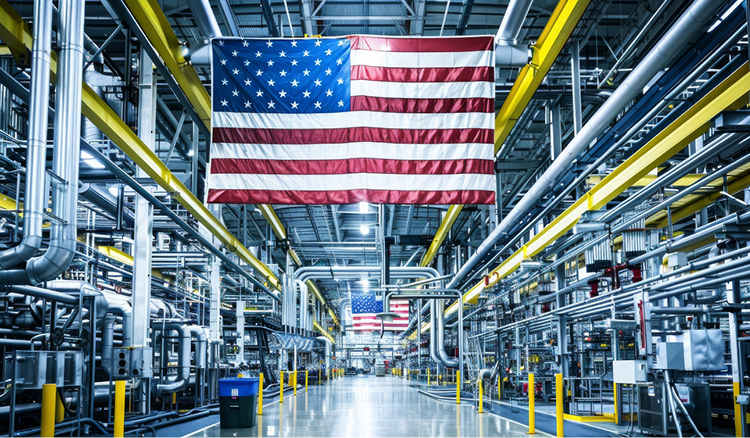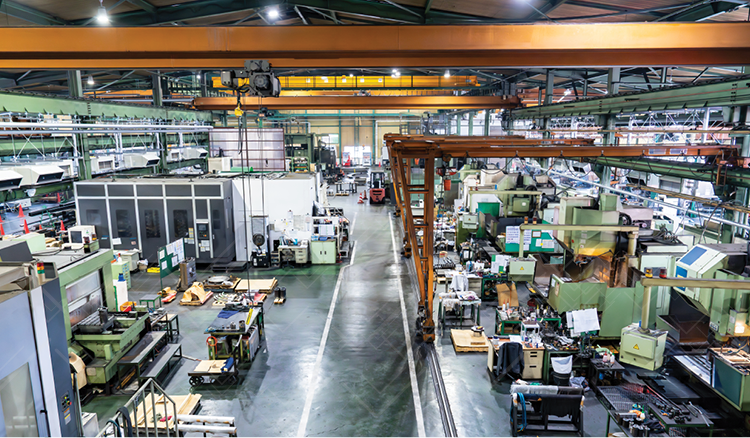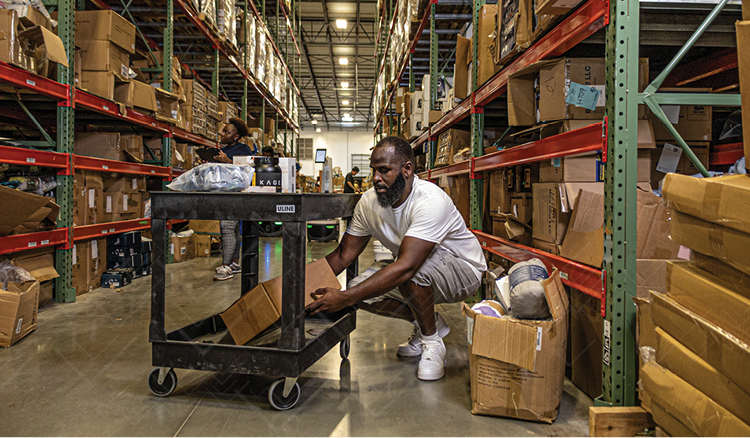What The New Administration Means For The U.S. Manufacturing Sector
Every election marks a new chapter in America, presenting opportunities to reassess priorities, adopt policies, and propel growth. With Donald Trump’s return to office, there’s renewed focus on reshaping policies to drive manufacturing and bolster the American economy. His administration, during its first term, made strides for the 13 million Americans in manufacturing. Now, as a second term looms, businesses are bracing for transformative changes in tax policies, trade, and research incentives. These changes also underscore the role Veryable can play in empowering manufacturers to thrive amid evolving landscapes.
The manufacturing sector faces unprecedented challenges today. Rising business costs—driven by healthcare expenses, tax hikes, and regulatory hurdles—have dampened optimism across the industry. Trump’s administration aims to counteract these challenges by cutting unnecessary regulations, prioritizing energy independence, and creating an environment where manufacturers can flourish. Policies centered on competitive tax rates, streamlined regulations, and energy security are expected to be front and center. Let’s explore the key policies to watch under a Trump 2.0 administration and how Veryable can help manufacturers adapt and thrive.
Tax Reforms: Carve-Outs for Domestic Manufacturing
A cornerstone of Trump’s policy agenda is tax reform, particularly an extension and expansion of the Tax Cuts and Jobs Act (TCJA). This legislation permanently reduced the corporate tax rate from 35% to 21%, but Trump seeks to lower it further, proposing a 15% rate for manufacturers producing within the U.S.
Such reductions would create a significant competitive edge, incentivizing companies to reshore operations and strengthen domestic supply chains. Tariffs on imports, paired with these tax incentives, may compel businesses to reevaluate global footprints and consider U.S.-based production.
For manufacturers, these reforms represent a pivotal moment. Companies positioned with high U.S. content stand to benefit immensely, while others may find it increasingly necessary to localize operations to capitalize on these tax breaks. Businesses should assess their tax strategies now to align with these potential changes.
With Veryable, businesses can channel these potential tax savings into agile labor solutions that minimize fixed labor costs. Rather than expanding with permanent hires, businesses can reinvest in on-demand labor that scales with operational demands, maximizing productivity while preserving cash flow. This flexibility allows companies to capture the benefits of tax incentives without the risks tied to fixed workforce expenses, positioning them for growth that adapts to any market conditions.
Trade Policies: Protectionism and Domestic Growth
Trump's trade policy emphasizes protectionism as a means of bolstering domestic manufacturing. By imposing tariffs, which act as taxes on imported goods, the goal is to make foreign products less competitive, encouraging businesses to source and produce domestically. For example, proposed tariffs on Chinese goods range from 60% to over 200%, demonstrating a strong commitment to reducing reliance on foreign supply chains. A universal 10% tariff has also been suggested, with some studies projecting it could create millions of American jobs.
This strategy is not new; in 2018, Trump imposed tariffs on imported steel and aluminum, excluding only Mexico and Canada. The steel industry provides a clear example of the intended benefits: U.S. steel manufacturers gained by selling more at higher prices, increasing revenue and profitability.
For businesses using the Veryable Platform, these policies introduce both challenges and opportunities. While navigating shifts in supply chains, businesses must remain agile to handle fluctuating demand. Veryable enables domestic manufacturers to respond flexibly to surges in demand, supplying skilled operators on an as-needed basis. This model allows businesses to scale up production in response to evolving trade dynamics, fostering a competitive advantage in industries where agility can mean the difference between growth and stagnation.
Research and Development Incentives
Innovation remains a critical driver for U.S. manufacturers, yet financial pressures have often overshadowed R&D priorities. Trump’s proposed policies aim to reverse this trend, offering expanded R&D tax credits and allowing businesses to fully expense the cost of heavy machinery and equipment within the first year.
This change would alleviate the financial burden of innovation, enabling manufacturers to invest in cutting-edge technologies without compromising their bottom lines. For small and medium-sized manufacturers, this is particularly impactful, providing resources to enhance competitiveness in a global market.
Veryable is uniquely positioned to support these businesses by offering scalable solutions that maximize productivity. By connecting manufacturers with skilled independent operators, Veryable can help businesses harness these incentives while improving operational efficiency.
The Veryable Advantage: Partnering for Success
As policies evolve, Veryable is poised to act as a vital intermediary for manufacturers navigating these changes. Smaller manufacturers, in particular, often lack the resources to fully capitalize on tax breaks, tariffs, and R&D incentives. Veryable can bridge this gap, offering tools and expertise to help businesses optimize their operations and seize new opportunities.
Through its on-demand marketplace, Veryable enables businesses to scale capacity in real-time, rapidly adapt to changing trade dynamics, and enhance throughput across the domestic supply chain. These capabilities not only strengthen individual businesses but also contribute to a broader revitalization of American manufacturing.
A Brighter Future for Manufacturing
The next chapter in American manufacturing holds immense promise. With the right policies in place, the sector can thrive, creating jobs, driving innovation, and reinforcing the nation’s economic leadership. For Veryable’s business partners, this is an opportunity to embrace growth and adapt to the changing landscape with confidence.
By aligning with Veryable, manufacturers gain access to a team of experts and a powerful platform that not only enhances operational efficiency, but positions them to take full advantage of upcoming policy shifts. Together, we can navigate the challenges ahead and build a stronger, more resilient future for American manufacturing.
To learn more about how Veryable can help you thrive amidst these changes, check out our Navigating Trump 2.0 page.
Getting Started
To get started with on-demand labor, take 5 minutes to create your free business profile. Our team of experts will reach out shortly after to walk you through the process and ensure that your team is setup for success. If you need any assistance, please contact us.
Previous Posts
Why Exhausting Your Recruiting Channels Is Not the Same as Exhausting the Labor Market
The Future of Manufacturing and Logistics
Create a free business profile today to explore our platform.






